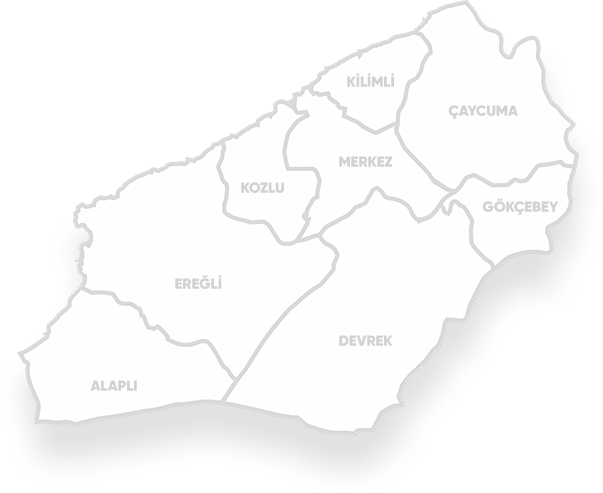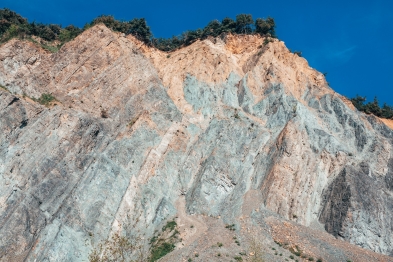
-
 About Us
About Us Detailed information about Zonguldak Coal Geopark and more...
About Us
About Us Detailed information about Zonguldak Coal Geopark and more... -
 Enjoy
Enjoy
-
 Discover
Discover Discover Zonguldak Geoparks
Discover
Discover Discover Zonguldak Geoparks -
 Learn
Learn
-
 Activities
Activities
-
 GeoNetwork
GeoNetwork
-
 Contact Us
Contact Us


Mevren Rocks
G-34 The visually striking units belong to the fluvial-lacustrine successions of the Çakraz formation dating back 259-251 million years. The unit of the formation consisting of black, dark gray to greenish gray shales, siltstones and limestones is called the Alaplı Member, while the unit containing red, pink, purple colored sandstones, conglomerates and rarely muddy tuffs is called the Ereğli Member. Palynological findings obtained from the Alaplı member indicate that the unit is of Upper Permian (Tatarian) age. This finding is new for the NW Anatolia region, and similar depositional environments are also known in the Eastern European Variscian orogenic Belt in Romania and Bulgaria on the basis of age and belt. According to this, the succession developed as terrestrial areas close to the coast, on the platform edge, to the northwest of Paleotethys at the end of Permian.
The unit, which presents cream, gray, yellowish and bluish gray colors and giant stratifications depending on the light in the outcrop, which has a height of approximately 40-50 m, has both visual beauty and scientific importance. The locality is the place where both members of the Çakraz formation, representing the upper levels of the Istanbul-Zonguldak Paleozoic, are seen together.




